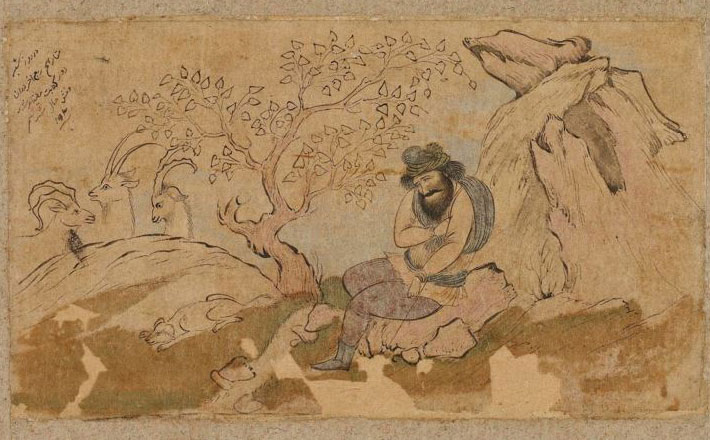Commentary on Acts 9:36-43
The Success of the Apostolic Mission
The lessons from Acts for the Sundays of Easter continue their witness to the power of the Spirit and the Resurrection of Christ Jesus. For summary comments on perspectives and themes of Luke-Acts that provide background and setting for this lesson, see the introductory comments on the lesson from Acts for the 2nd Sunday of Easter.
It is important to review the narrative of Acts between last Sunday’s lesson and this one to set the stage for the hearing of this brief but poignant story. After the dramatic conversion stories of Saul and Ananias, we hear of Saul’s powerful preaching of Jesus the Messiah, and its dramatic effect on hearers who are amazed at the witness of this former persecutor of the disciple community.
In action fit for a TV serial, plots to kill him become known, and Saul escapes by night through the Damascus wall. But his attempts to join the disciples in Jerusalem are met with fear until Barnabas vouches for him by recounting the story of his encounter with the risen Lord. Once Saul is accepted, the success of his bold preaching occasions yet more plots to kill him, leading to his being whisked off and back to his home country of Tarsus in Asia Minor. Still, the narrative now summarizes with some sense of amazement, the church continues to grow as it lives in peace enlivened by the fear of the Lord and empowered by the Spirit’s encouraging presence.
A Sanctuary of Death and a Grieving Community
In the midst of these success stories, which include Peter’s healing activity in the area of the seacoast port of Joppa, comes this poignant story of sorrow and loss. In the midst of comfort, success, and growth, there is the painful reminder that the last enemy of death still lingers and threatens this early Christian community’s and our own present day community’s confidence and faith in the power and promise of Jesus’ resurrection. The grand schema of God’s apostolic mission to bring the gospel to all nations and to the ends of the earth (Acts 1:8) does not skip over the implications and the reality of the promise of Christ’s resurrection for the pain and suffering of individual lives, then or now.
The vivid description and careful detail of this story describe shock at a sudden death, the preparation for burial, the viewing and visitation of the mourners, all too familiar to ones who have walked with numbness through such scenes at the death and funeral of a loved one. Though brief in extent, the seven verses of the story hardly mask the deep sorrow and loss of those who care and grieve or the relief and joy of those who in these few moments have experienced the transforming power of the resurrection from death to life. We identify readily with those in the story because we have all been there.
The opening two verses literarily imitate the shocking reality of death. In contrast to many unnamed disciples, the author begins by naming Tabitha, taking time to honor her by translating her name and praising her life for its devotion to “good works and acts of charity” (9:36). Verse 37 begins with Luke’s signature “and it came to pass in those days” (see Luke 2:1; 4:2; Acts 2:18). Accordingly, the reader might expect a story of success and promise, much like the story of the righteous Zechariah and Elizabeth that begins Luke’s narrative (Luke 1:5-25). Instead, before we are through the next sentence, Tabitha has become ill and died. We are shocked by the suddenness. The simple direct narrative of the unnamed “they” who wash and lay her out in an upper room hardly masks the love, the care, and the grief of the community who have experienced her acts of mercy.
Still in shock, the community grasps for any hope and cries out in desperation for Peter to come without delay, carefully strengthening their appeal by sending “two men” to carry their request. Peter responds by immediately coming, and upon his arrival is ushered into the “upper room” so recently identified (9:37) as the sanctuary of death. But it is also the sanctuary of grief and the outpouring of love as her friends gather around him, eager even in their weeping to detail their loss by the parade of tunics and clothing she has made, the signs of her loving and caring life. That those gathered are “all the widows” (9:39), witnesses both to the culture and the society where the poor have their suffering multiplied, and to the fact that these women have been no stranger to death. The fact that they have been in such an upper room before does not ease their grief.
An Upper Room: From Death to Resurrection
With his concluding “while she was with them” (9:39), the narrator certainly recalls another upper room and one who “was with them” in a story that moved from death to resurrection (see Luke 24:44f). Now one senses another power present as Peter calmly ushers them out, kneels confidently in prayer, and then addresses the body with the command, “Tabitha, arise” (9:41). The double sense, as usual, is intentional in its recollection of the resurrection.
Immediately, Tabitha opens her eyes and sits up, and Peter calls all the saints and widows and “presents” her to them alive, much as they have so recently “presented” to him the clothing and remnants of her acts of mercy that were reminders of her death (9:39). The story only leaves to the readers’ imagination to fill in the joyful reunion that must have accompanied Tabitha’s return to her community. But the story does conclude with a brief reference to the circulation of the story and to its occasioning many to respond in faith in the risen Lord.
As suggested above, the details of this story will find immediate recognition in the experience of those who grieve at the death of a loved one. As such, it provides the preacher the opportunity in the midst of the season of Easter, in the context of worship, to witness to the promise and the power of the resurrection of our Lord to enter into the real places of daily life, to address even those darkest times of human grief and loss. At those times this story reminds us that even “good works” and “acts of charity” are not sufficient protection against the signs of death that stalk us and surprise us.
This story will not answer all our questions. For example, why do we not today experience the same resurrection of loved ones that was given to Tabitha and the early Christian community? But what the story does bring is the clear and certain witness to the power of our Lord’s resurrection, and to the good news that not only at times of death, but at other dark times, the Spirit of the risen Lord enters our world to bring life and healing and hope.


April 25, 2010